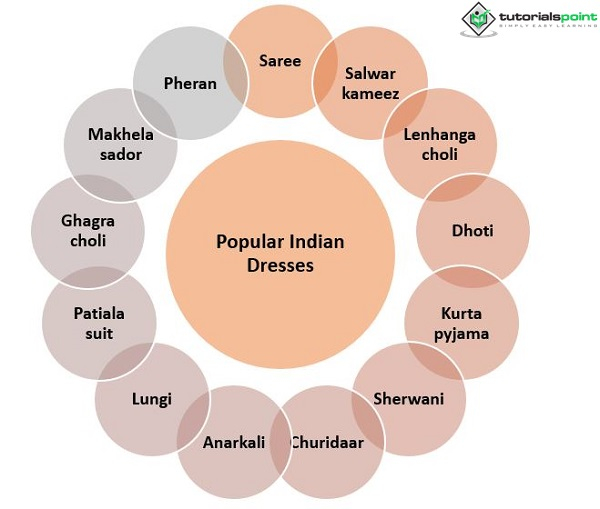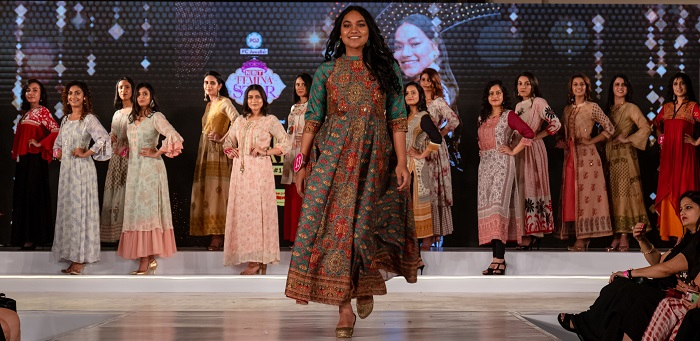

India is known for its rich and diverse culture, and traditional Indian dresses are an integral part of this culture. These garments are not only a reflection of India's cultural heritage but also showcase the diversity of the country. From the elegant and traditional saree to the comfortable and practical kurta pyjama, there is a wide variety of traditional Indian dresses that are popular among people in different regions of India. These traditional garments are worn not only during festivals and ceremonies but also in daily life. Traditional Indian clothing is a great way to preserve the cultural heritage of the country and also experience the richness of Indian culture.

As we know, India is a country of diverse geographical features, traditions, and accordingly, different cultural settings. Interestingly, the range and style of dresses are pretty diverse and phenomenally different from each other. In the north region where most of the months are cold, prefer to wear woollen and heavy cloth; on the other hand, south region, where there is no winter, have entirely different. In the east region, people are traditional and prefer their traditional dresses; lastly, in the west, the climate is relatively warm, which influences their lifestyle. Amidst all, the effect of globalization and westernization is everywhere; as a result of this, in urban areas, there is hardly difference, everywhere people wear largely western dresses.
However, here I have enlisted some of the most popular traditional dresses that are typically worn in India −

Saree − This is a long piece of cloth that is wrapped around the waist and draped over the shoulder. It is worn by women and is considered one of the most elegant and traditional Indian garments.
Salwar kameez − This is a combination of a long tunic and loose-fitting pants. It is worn by women and is popular in northern India.

Lehenga choli − This is a combination of a long skirt, a blouse, and a dupatta. It is worn by women and is popular in western and northern India.
Dhoti − This is a rectangular piece of cloth that is worn around the waist and legs. It is worn by men and is popular in southern India.
Kurta Pyjamas − This is a combination of a long tunic and loose-fitting pants. It is worn by men and is popular in northern India.
Sherwani − This is a long, coat-like garment that is worn over a kurta and churidar. It is worn by men and is popular in northern India.
Churidaar − This is a type of pants that are tight-fitting around the calf and ankle. It is worn by both men and women and is popular in northern India.
Anarkali Suit − This is a type of dress that features a long, flowing top and a fitted bottom. It is worn by women and is popular in northern India.
Lungi − This is a type of sarong that is worn around the waist. It is worn by men and is popular in southern India.
Patiala suit − This is a type of dress that features a long tunic and loose-fitting pants. It is worn by women and is popular in northern India.
Ghagra choli − This is a type of dress that features a long skirt and a blouse. It is worn by women and is popular in Western India.
Mekhela Sador − This is a traditional dress worn by women from Assam. It is a two-piece attire, where Mekhela is worn as lower wear and Sador as upper wear.
Pheran − A traditional dress worn by men and women from the Kashmir region. It is a long, cloak-like garment that is typically worn over a kurta and churidar.
These are some of the most popular traditional Indian dresses, but India has a wide variety of regional costumes, depending on the state and the culture.
In conclusion, India has a rich and diverse traditional dress culture. Some of the most popular traditional Indian dresses include the saree, salwar kameez, lehenga choli, dhoti, kurta pyjama, sherwani, churidar, anarkali suit, lungi, patiala suit, ghagra choli, mekhela sador, and phoran. These traditional garments reflect the diversity of the country and its cultural heritage. They are not only worn during festivals and ceremonies but also in daily life. Traditional Indian clothing is a great way to preserve the cultural heritage of the country and also experience the richness of Indian culture.